#NatureZen: A tender ode to teneral odes
words and photos by Melissa McMasters, Conservancy Director of Communications
I’ve been thinking a lot lately about emergence. When we’re all able to come outside of our homes again, how will we have changed? It seems certain that our concept of safety and security will be altered, at least for a while. For many of us, there will be a vulnerable period where we guard ourselves closely, perhaps limiting our movements to protect ourselves from illness.
In this way, we’re not dissimilar from some of my favorite creatures: the odonates.
Odonata is the order of insects containing dragonflies and damselflies. (How to tell them apart? Dragonflies hold their wings perpendicular to their bodies, and damselflies hold them parallel, over their abdomens.) Odonates have a three-phase life cycle: egg, nymph, and adult; they skip the resting pupa phase that you see in butterflies, wasps, and beetles.
Odes live most of their lives as aquatic nymphs, where they can spend a year or more devouring everything from mosquito larvae to small fish. When they’re ready to transform into adults, the nymphs move to the surface, letting their heads emerge from the water and beginning to breathe air. Then they crawl onto a plant and begin to shed their larval skin. It’s this time after they’ve molted, when they’re hanging on to the plant for dear life, that odes are most vulnerable. This is called the teneral stage, which literally means “soft-bodied” but also evokes the word “tender.”
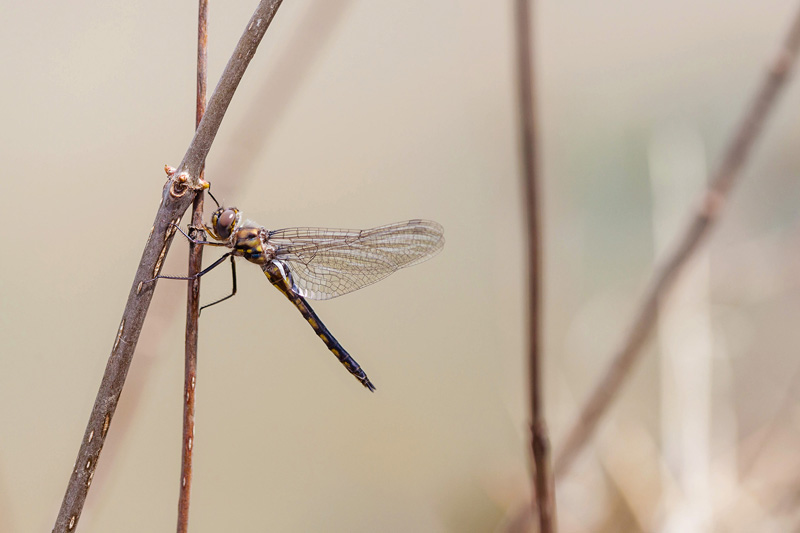
This common baskettail dragonfly has just emerged and is waiting for his wings to dry out (notice that he’s not yet holding them apart). His colors are muted, and his wings have a glossy, shimmering quality. When he first flies, it will be weakly and only for short distances, as he waits to gain the strength he’ll have when his body firms up. Contrast this photo with one of the same species that’s reached maturity. He’s far more vibrant, and he’s so busy hunting that he rarely stops to perch.
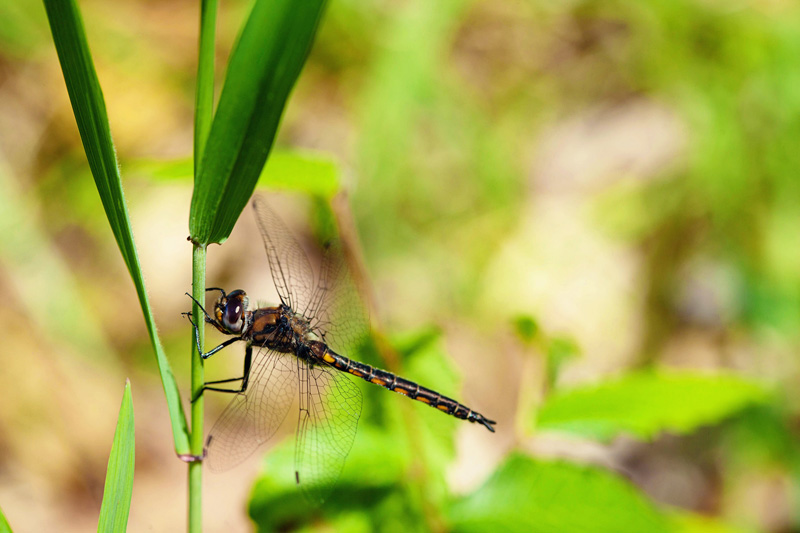
This teneral lancet clubtail has spread its wings and attempted its first flight away from the pond, but its colors are still muted and its wings still fragile.
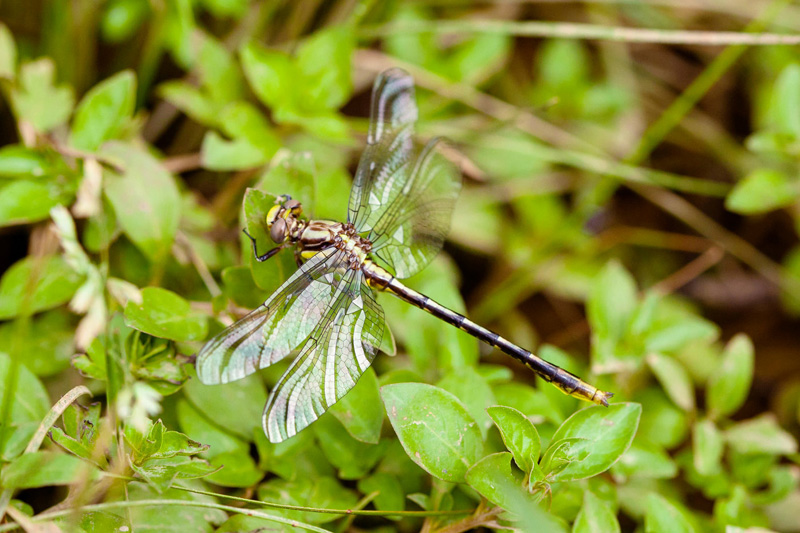
Here’s a lancet clubtail that has reached maturity. The patterns on its body remain the same, but the colors have brightened considerably.
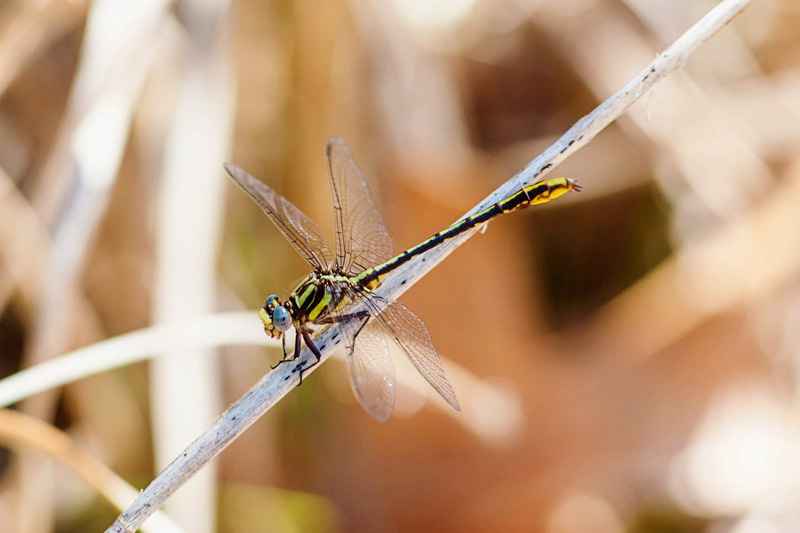
In damselflies like this fragile forktail, sometimes the teneral insects have stripes on their eyes!
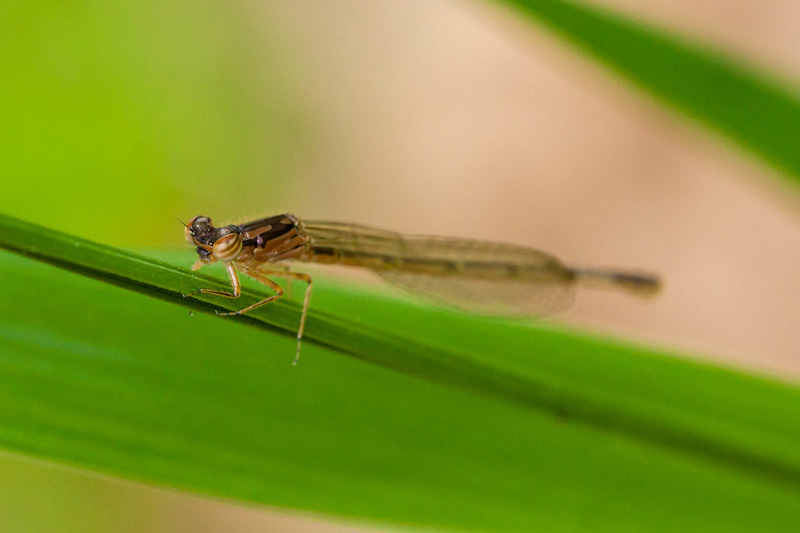
These eye stripes fade as the damselflies reach maturity. (ID tip: this is a common insect in our area spring through fall. If you can get close enough to get a good look, you can identify it by the two “exclamation points” on its thorax.)
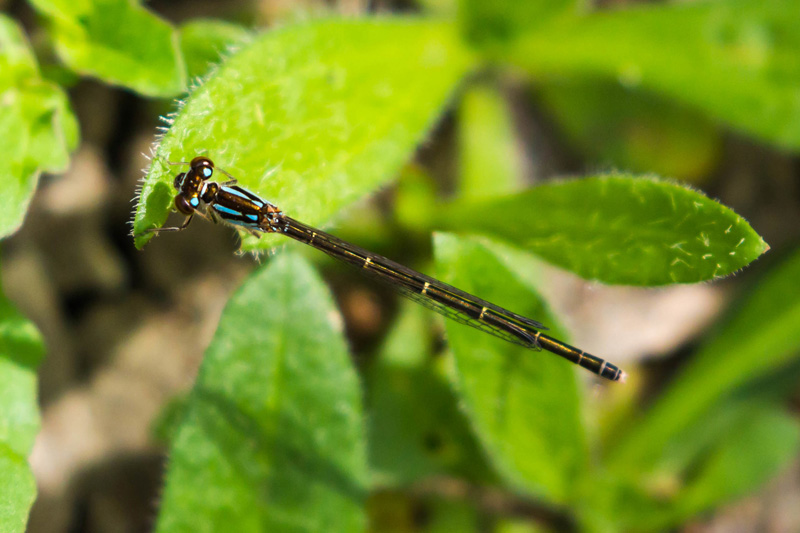
Some damselflies undergo a complete color change from the teneral stage to the mature stage. This purple creature is actually a female orange bluet, who will grow up to be either blue, greenish, or a dull orange.
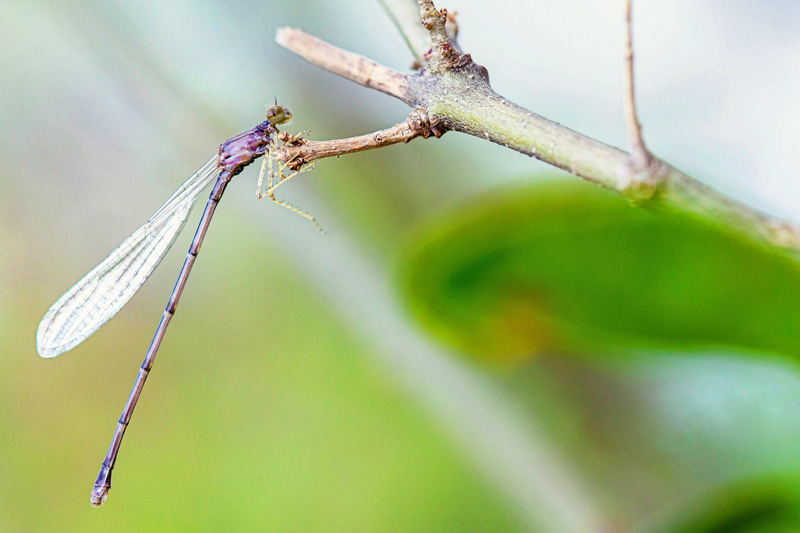
I’m kind of partial to the purple color myself, although I appreciate how much easier it becomes to identify this species once it matures!
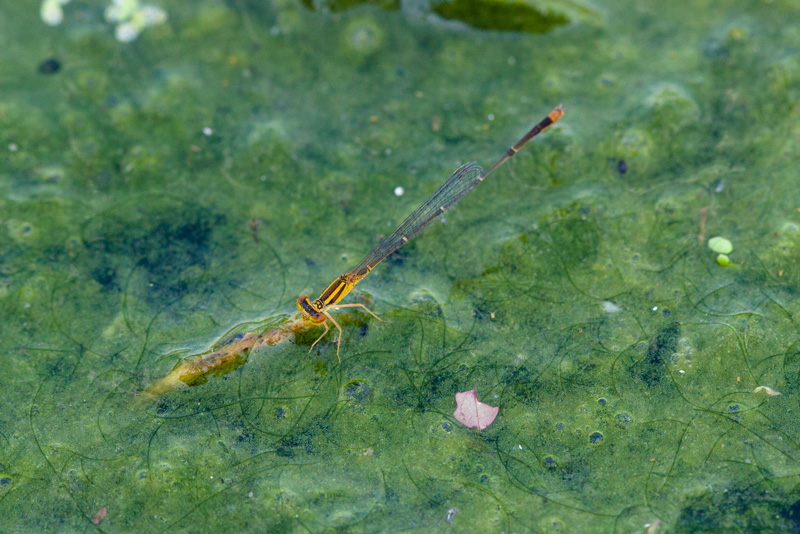
Can you pick out the differences between the teneral and adult calico pennant?
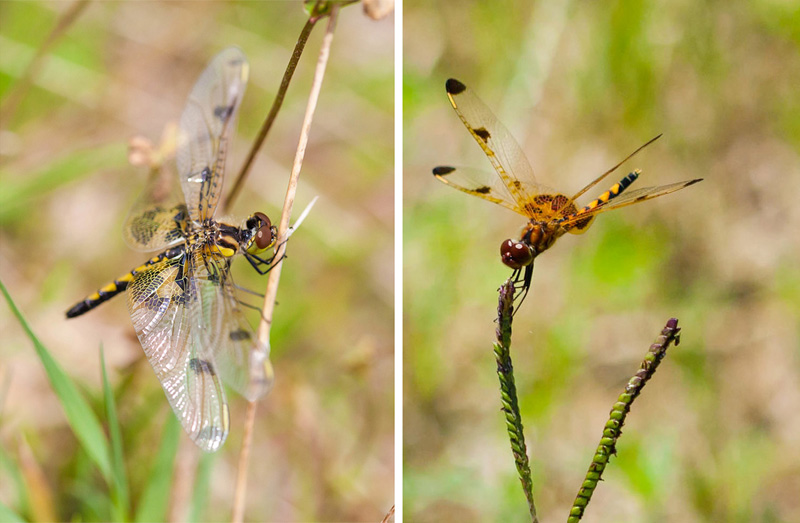
Whenever we emerge, I hope that we all make it out of our teneral stage and become vibrant, healthy, and strong again. Meanwhile, next time you’re at a pond or body of water, look closely at the vegetation and see if you can spot a teneral ode!
Want #NatureZen in your inbox? Subscribe to our emails!
Help us keep #NatureZen possible with a gift to the Conservancy.



